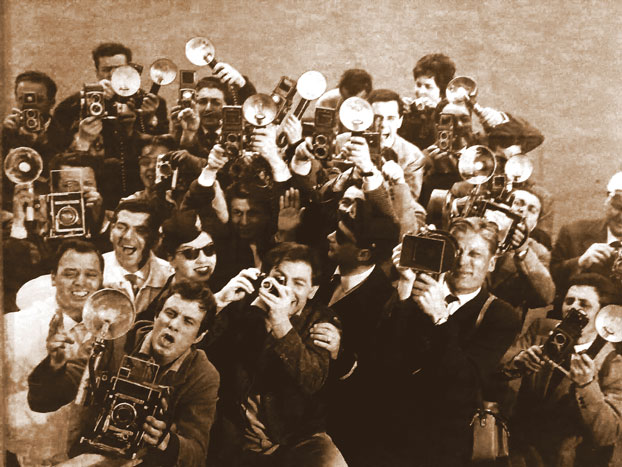The media over the years

A few years ago, a local TV channel in Delhi sent a very young girl to get a ‘bite’ from a very senior minister after he had finished his speech somewhere. Dutifully, she stuck the mike in his face and asked him for his comment, which he gave. Then the girl asked him, “Please, Sir, can you tell me your name?” The minister told me he has never recovered from that episode.
Journalism wasn’t always so breathless, and, so literally in-your-face. When print was the only medium — radio news has never caught on in India — it was a more relaxed affair. Those who had something to say invited you for a cup of tea and made their statement. You asked your questions politely, without shouting. You got your answers, noted them down, went back and filed your report.
It was vetted first by your immediate superior, then by the production crew called the ‘desk.’ The mistakes were ironed out, needless adjectives were removed, and a sober headline was given. It summarised the news below — instead of asking a question which has become the fashion now to escape legal consequences (eg, ‘Did X rape Y?’ instead of saying ‘X raped Y’).
Lazy reporters
There was a negative aspect to this style of journalism — it produced lazy reporters who waited for the news to come to them. Also, since only the government or political parties always had something to say, the ‘news’ was heavily administrative and political. Features were for the women who would write on cooking or curtains and of course the arts — music, dance, etc. The only exception allowed was literature — but not fiction.
The liveliest spot in the paper was the sports page because neither entertainment nor business was considered respectable enough to cover. Business, in particular, was shunned almost totally. A company’s name could never be mentioned. Entertainment lived in a journalistic ghetto with its own weekly or fortnightly publications.
This form of dictation-journalism began to change in the mid-1970s when editors like the late B G Verghese started the tradition of investigative journalism. He commissioned and printed a series in 1974 that showed how even though Indira Gandhi had inaugurated a large number of ‘development’ projects since 1970, not a single one of them had taken off. He was soon dismissed.
Political journalism takes off
It was only after the Emergency that political journalism took off and business journalism became ‘all right’ but was confined to the back pages. The lead was taken by the newly launched magazine India Today. Not only did it start writing about different things, it did so with style and panache with lots of pictures and quotes. It also broke with the tradition of not printing the names of officials or their photos.
Daily newspapers took some time to change their ways but this happened in the mid-1980s. Features, business and entertainment now occupied a central place in a newspaper. More importantly, so also rank and age. By the end of the 1980s, the average age in the print media had dropped to 37. It was full of young generals and younger soldiers. This was the first whiff of breathless journalism. The results were dramatic in terms of sales and profit growth.
Enter TV journalism!
But all good things must end and in the 1990s came TV news. To begin with it was only for a few hours a day but by 2000, 24 x 7 TV news had become the norm. After that, print stood no chance and it became only a matter of time before its importance to both the consumer of news and the purveyor of advertisements declined. TV, in ten seconds, reached ten thousand more times the people that print could ever hope to.
The next decade, from 2000–2010 was dominated entirely by TV news. The written word became increasingly less popular. There was growth in sales because of the higher number of literate people; but profits were dropping throughout this period. Even so, the combined worth of the media — print and TV — was around Rs 40,000 crore in 2010. It was a good business to be in because if your offering was even reasonably alright, you could make a small amount of money. But far more importantly, you could wield a lot of influence, if not power.
Social media arrives
In the last five years, with the increasing penetration of the Internet and handheld devices, even that has changed. This platform, via Twitter, Facebook and alerts, makes news available instantly, on the move and for free. The generation born after 1985 hardly ever reads ink-on-paper news; and it almost never watches TV news. The downside of Internet-delivered news is that there are no quality filters. But no one seems to care. As a result, the trend of higher top lines and lower bottom lines has continued for print and TV. News has become commoditised.
Over the next decade a shakeout is due so that the industry can consolidate. Indeed, with the heavy presence of the large corporates in the media, the process has already begun. It will be interesting to see how things unfold over the next few years. My guess is that Twitter will become the mainstay of staple news and information.
In that sense, professional journalists may be a dying breed.
